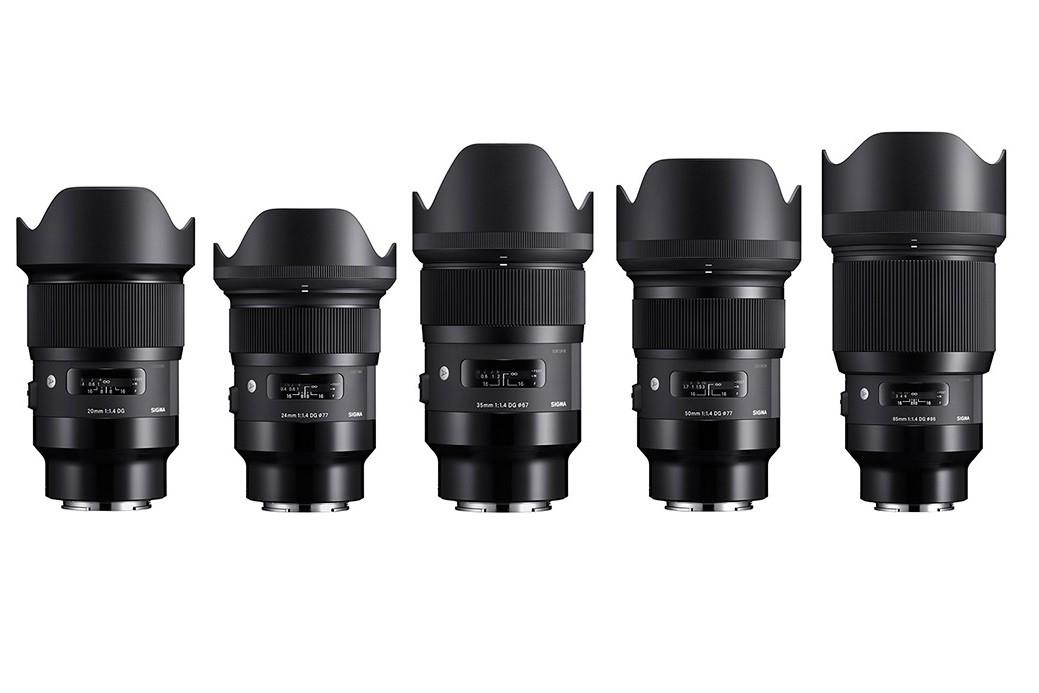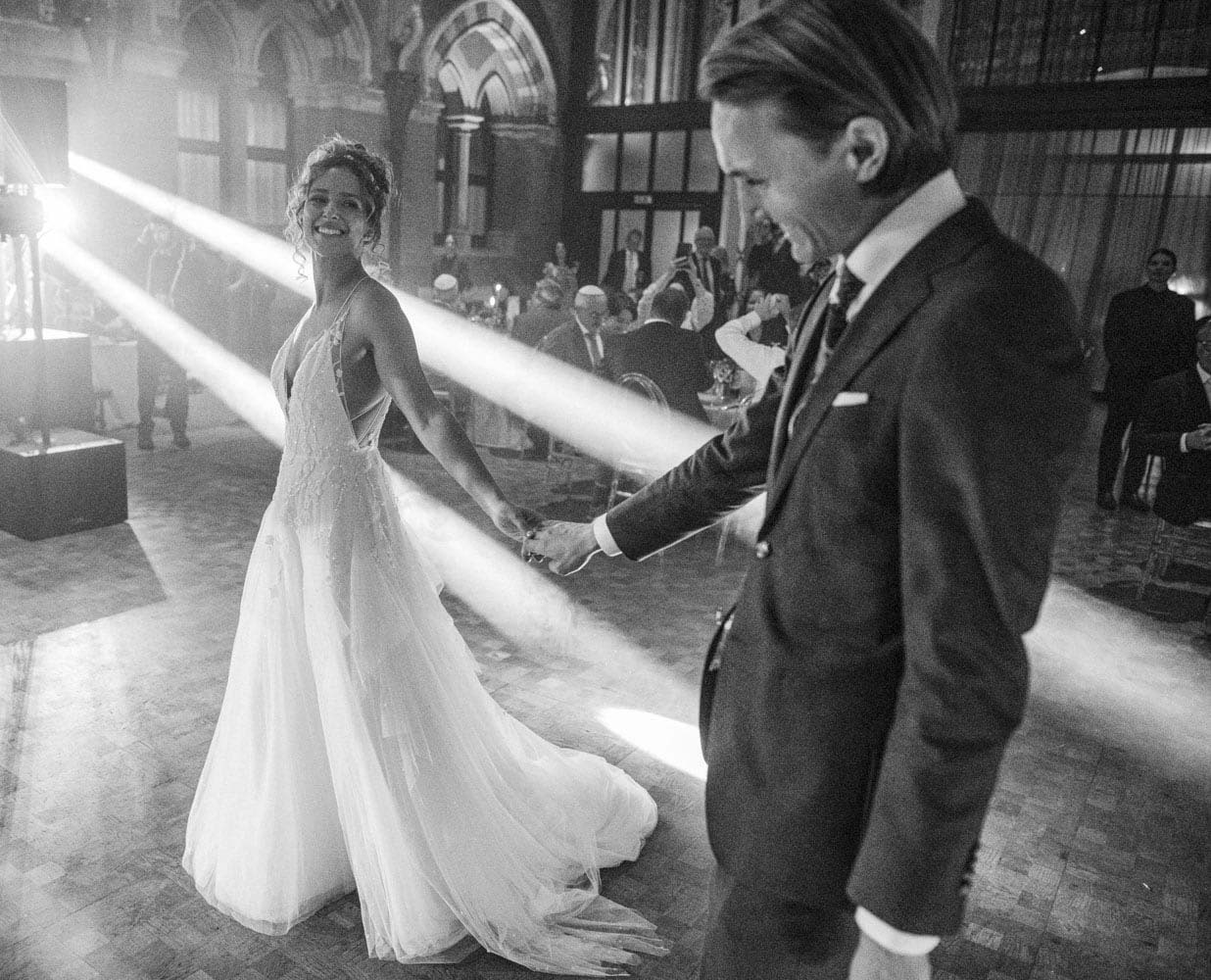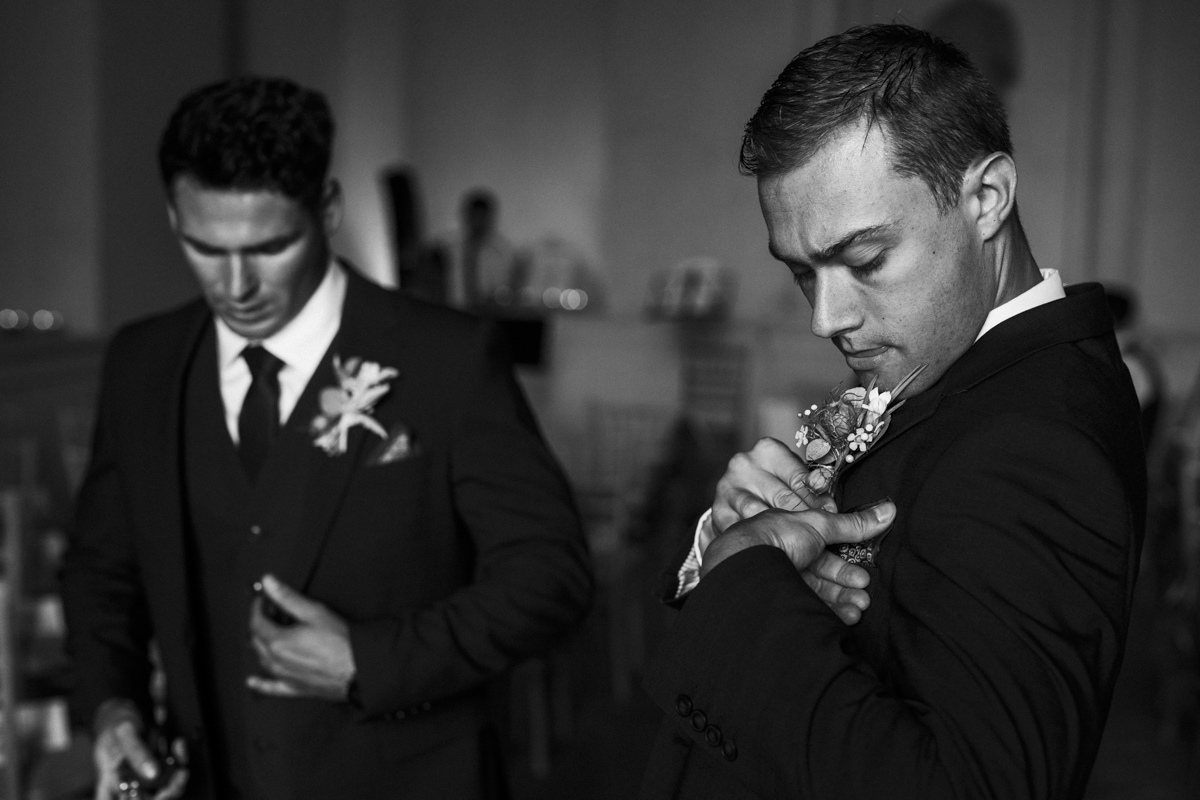The Sigma Art series of lenses, introduced by Sigma Corporation, represents a commitment to high optical performance, innovative design, and exceptional image quality. Launched as part of Sigma’s Global Vision project in 2012, the Art series redefined Sigma’s brand, marking a shift towards producing high-end lenses that cater to the most demanding photographic standards.

Which lenses do I use?
Currently I’m using the 24-35 f2 and the 50mm f1.4. Both lenses are exceptionally sharp and very quick to focus. I chose the 24-35 because its basically three primes in one. I love the look of 28mm, but sometimes it’s not wide enough in a tightly packed hotel room where bride and bridesmaids are getting ready. I also like to be close to the action, if you’re three feet away from someone, 24mm (or wider) is ideal. I like having the ability to reach a tiny bit further to 35mm because sometimes the action unfolds so quickly you simply don’t have time to switch cameras. All you can do is react, zoom in a little bit and work with what’s happening. In an ideal world I’d have something like a 17mm-28mm f2, some of my favourite pictures ever i took on the canon 17-40mm, but I found I had to shoot everything at 5.6 to get the image as sharp as i wanted. In some really dark venues 5.6 just isn’t possible. In January 2024 for example, I shot in one of London’s oldest churches. f/2 and ISO 6400 was getting me to 1/40, it was so damn dark.
The 50mm I have on a separate body and use this for details and couple shots, although I’m finding more and more I prefer 35mm and 24mm for couple pictures, maybe because my height (6’3″) means that I’m naturally looking down, and often makes people look smaller. I’m tempted to entirely revisit my lens setup, but finances might dictate otherwise! Anyway, the 50mm for detail shots is perfect, and at 1.4 you can get the editorial look that venues and couples love. The wide aperture helps massively in the context of weddings, even though I love documentary photography there is still a ‘beautiful’ element to weddings, shooting wide open definitely aids this.
I tend to shoot 80% of the day on the 24-35 and 20% on the 50mm. Here’s some examples
Sigma Art 24-35mm f2 example images






Sigma Art 50mm f1.4 example images




In short, i think these lenses are excellent, way better than the Canon equivalents.
I’ve used the Canon 50mm 1.2 and it’s slow and clunky compared to the Sigma and nowhere near as sharp.
The biggest downside of the Art Series is the size and weight, they are exceptional lenses (I say exceptional because of the price of them as well), but these two in particular are pretty heave, which can take it’s toll after a full day of use.
Here is a detailed look at the history and development of the Sigma Art series of lenses:
Introduction and Concept
- Global Vision Project (2012):
- Sigma announced its Global Vision project, categorizing its lenses into three distinct lines: Art, Contemporary, and Sports. The Art series, in particular, was designed to prioritize optical performance and artistic expression, targeting professional photographers and enthusiasts who demand top-tier image quality.
- The project was not just about creating new lenses but also about establishing a new manufacturing standard, ensuring consistent quality across all lenses produced.
Design and Features
- Optical Excellence:
- The Art series lenses are known for their outstanding resolution, beautiful bokeh, and minimal optical aberrations. Sigma achieved this through advanced optical designs and the use of premium glass elements, including Special Low Dispersion (SLD) glass and aspherical elements.
- Build Quality and Design:
- The lenses in the Art series boast a sleek, modern design with a focus on usability and durability. The build quality is solid, with most lenses featuring a combination of metal and high-quality thermally stable composite (TSC) materials.
- Focus on Wide Aperture:
- Many Art series lenses offer wide apertures, making them ideal for low-light photography and for achieving a shallow depth of field. This characteristic made them particularly popular among portrait, landscape, and architectural photographers.
Notable Milestones and Models
- Introduction of the Sigma 35mm F1.4 DG HSM | Art (2012):
- The 35mm F1.4 DG HSM was the first lens introduced in the Art series. It quickly gained a reputation for its exceptional sharpness, beautiful bokeh, and overall image quality. It set the standard for what photographers would come to expect from the Art series.
- Expansion of the Lens Lineup:
- Over the years, Sigma continued to expand the Art series, introducing a wide range of focal lengths and aperture sizes. Notable lenses include the 50mm F1.4 DG HSM, the 85mm F1.4 DG HSM, and the 24-70mm F2.8 DG OS HSM, among others.
- Sigma 14-24mm F2.8 DG HSM | Art (2018):
- This lens was noteworthy for its ultra-wide-angle zoom and high-resolution performance, catering to the needs of landscape and architectural photographers.
Reception and Impact
- Critical Acclaim:
- The Art series lenses were met with critical acclaim from both professional photographers and photography publications. They were praised for their sharpness, build quality, and value, often being compared favourably to more expensive lenses from established brands.
- Market Impact:
- The introduction of the Art series helped to elevate Sigma’s brand, positioning it as a serious contender in the high-end lens market. The series disrupted the market by offering professional-grade lenses at competitive prices, challenging the dominance of traditional brands.
Continuous Innovation
- Lens Customization and Calibration:
- Sigma introduced the Sigma USB Dock, allowing photographers to update firmware and customize settings like focus parameters, further enhancing the versatility and performance of Art series lenses.
In summary, the Sigma Art series of lenses is a testament to Sigma’s commitment to optical excellence and innovation. By prioritizing image quality, build standards, and the artistic needs of photographers, Sigma has not only redefined its own brand but has also made a significant impact on the photography industry as a whole. The Art series continues to evolve, pushing the boundaries of lens performance and catering to the ever-growing demands of photographic expression.
Sigma Art series includes a wide range of lenses renowned for their optical quality and performance. The list below includes various focal lengths and lens types, catering to different styles and needs in photography:
List of Sigma Art Prime Lenses
- Sigma 14mm F1.8 DG HSM | Art
- Sigma 20mm F1.4 DG HSM | Art
- Sigma 24mm F1.4 DG HSM | Art
- Sigma 28mm F1.4 DG HSM | Art
- Sigma 30mm F1.4 DC HSM | Art
- Sigma 35mm F1.4 DG HSM | Art
- Sigma 40mm F1.4 DG HSM | Art
- Sigma 50mm F1.4 DG HSM | Art
- Sigma 70mm F2.8 DG Macro | Art
- Sigma 85mm F1.4 DG HSM | Art
- Sigma 105mm F1.4 DG HSM | Art
- Sigma 135mm F1.8 DG HSM | Art
List of Sigma Art Zoom Lenses
- Sigma 12-24mm F4 DG HSM | Art
- Sigma 14-24mm F2.8 DG HSM | Art
- Sigma 18-35mm F1.8 DC HSM | Art
- Sigma 24-35mm F2 DG HSM | Art
- Sigma 24-70mm F2.8 DG OS HSM | Art
- Sigma 24-105mm F4 DG OS HSM | Art
- Sigma 50-100mm F1.8 DC HSM | Art
List of Sigma Art Telephoto Lenses
- Sigma 100-400mm F5-6.3 DG OS HSM | Art
These lenses are designed for various camera mounts, including Canon EF, Nikon F, Sony E, and Leica L, among others. It’s important to note that Sigma continuously updates its lineup, and new lenses may have been introduced after my last update. Always refer to the official Sigma website or trusted photography equipment providers for the most current information.
